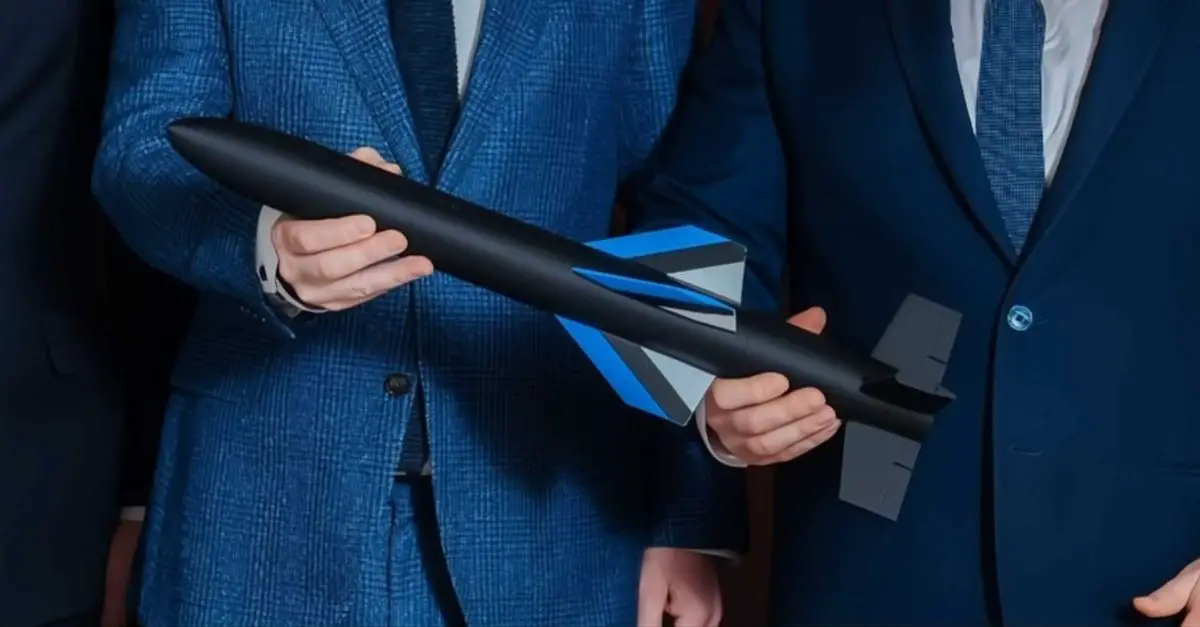Breaking News
Estonia’s first domestic missile Mark 1 to intercept Iranian drones in Ukraine.
As reported by ERR on December 6, 2024, Estonian defense company Frankenburg Technologies is set to begin testing its Mark 1 air defense missile in Ukraine in early 2025. This testing follows an agreement between Frankenburg and Ukraine’s Ministry of Defense, finalized during discussions with Deputy Defense Minister Brigadier General Anatolii Klochko. The Mark 1, Estonia's first known domestically developed missile, is specifically designed to intercept unmanned aerial vehicles (UAVs). These include Iranian-made Shahed-131 and Shahed-136 drones (referred to as Geran-1 and Geran-2 in Russia) that have targeted Ukrainian infrastructure since 2022.
Follow Army Recognition on Google News at this link

The Mark 1 missile's smaller size reduces material costs and simplifies manufacturing but limits its range and payload compared to larger systems like the FIM-92 Stinger. (Picture source: Frankenburg Technologies)
The Mark 1 missile can engage targets at altitudes of up to two kilometers and features an artificial intelligence-based situational awareness platform to assist in threat detection and targeting. According to Frankenburg CEO Kusti Salm, the missile’s design emphasizes cost-effectiveness and rapid production, with initial plans to manufacture several dozen units weekly and scale to hundreds per week by late 2025. The company is considering producing the missiles in Ukraine, depending on successful trials and finalized financing agreements.
Reports describe the Mark 1 as a compact missile, approximately 0.5 meters in length, optimized for engaging UAV threats. Its smaller size reduces material costs and simplifies manufacturing but limits its range and payload compared to larger systems like the FIM-92 Stinger. Analysts estimate the missile’s range at two kilometers, with a maximum altitude of one kilometer and a warhead weighing approximately 0.5 kilograms. The targeting system is believed to use machine vision technology for automated threat identification and engagement.
This development reflects a broader trend among European defense startups integrating artificial intelligence (AI) into military technologies. Companies like Frankenburg Technologies, Helsing, and Stark Defense are focusing on AI-powered solutions such as anti-drone missiles, situational awareness systems, and strike drones. These efforts are bolstered by increased regional defense budgets and concerns over reduced external support, particularly from the United States. Collaborative projects, such as Rheinmetall’s partnership with Auterion to develop standardized drone control software, emphasize interoperability and advanced technological capabilities within NATO forces.
Frankenburg Technologies, founded in 2024 and headquartered in Tallinn, Estonia, operates in Estonia, Latvia, and Ukraine. The company is led by former Estonian military leaders, including General Martin Herem and Major General Veiko-Vello Palm, who transitioned to the private sector after their military careers. Frankenburg focuses on developing missile systems that are faster to produce, more affordable, and available in larger quantities than existing alternatives.
Ukraine’s Deputy Defense Minister has emphasized the critical importance of diversifying air defense systems to establish a robust, multi-layered defense network capable of countering a wide range of threats. This strategy involves various systems to address different threat levels, enhancing overall defense effectiveness. The country has incorporated advanced Western air defense systems, such as the U.S.-made Patriot missiles and German-supplied IRIS-T systems, to strengthen its capabilities against high-altitude and long-range threats. Additionally, Ukraine has deployed mobile air defense units like the German Gepard Self-Propelled Anti-Aircraft Gun (SPAAG), which are effective against low-flying drones and cruise missiles. This multi-layered strategy also includes small arms and electronic warfare measures to counter unmanned aerial systems, reflecting a comprehensive approach to air defense. Despite these efforts, Ukrainian officials underscore the need for further enhancement of the air defense network to fully protect the nation's skies.
Ukraine and Estonia’s cooperation is supported by a 10-year bilateral security agreement signed in June 2024. This agreement commits Estonia to provide €100 million in defense aid in 2024 and allocate 0.25% of its GDP annually for military support through 2027. The partnership also includes plans for strategic dialogue and collaboration on military-industrial projects, highlighting a joint effort to enhance regional security. Therefore, the upcoming tests of the Mark 1 missile are expected to refine its capabilities and determine its suitability for deployment. If successful, the system could offer Ukraine a cost-effective option to counter UAV threats and support Frankenburg Technologies’ production goals. The trials aim to provide critical data to inform Ukraine’s air defense strategy and enhance its defense capabilities through both domestic development and international collaboration.


























